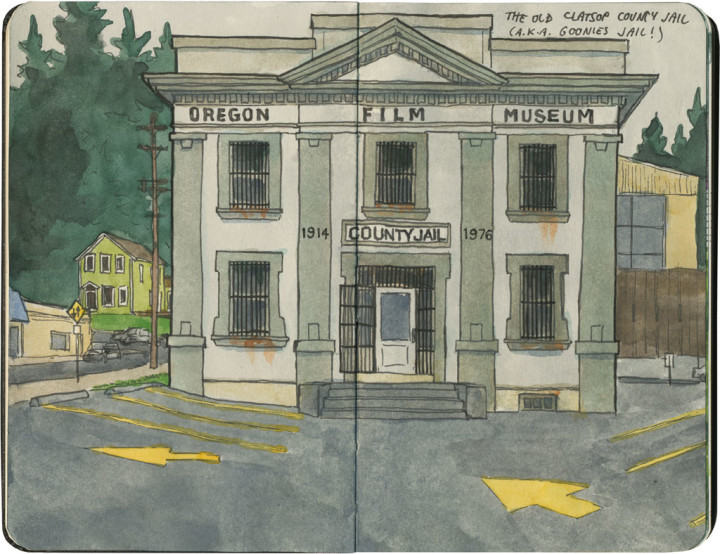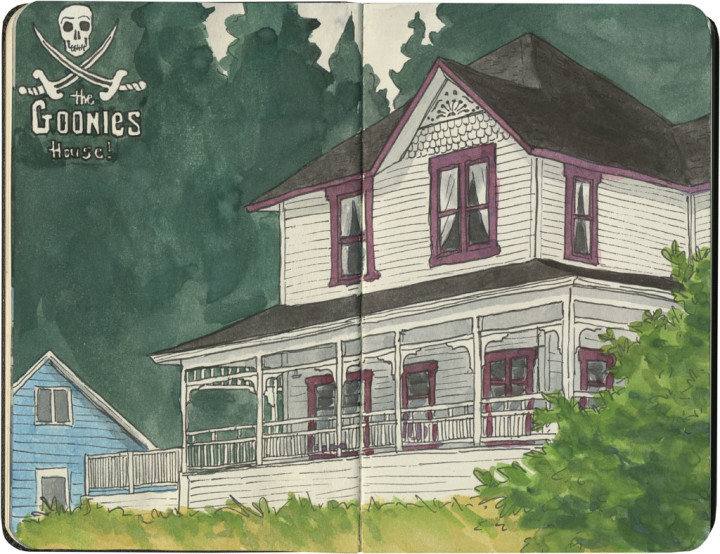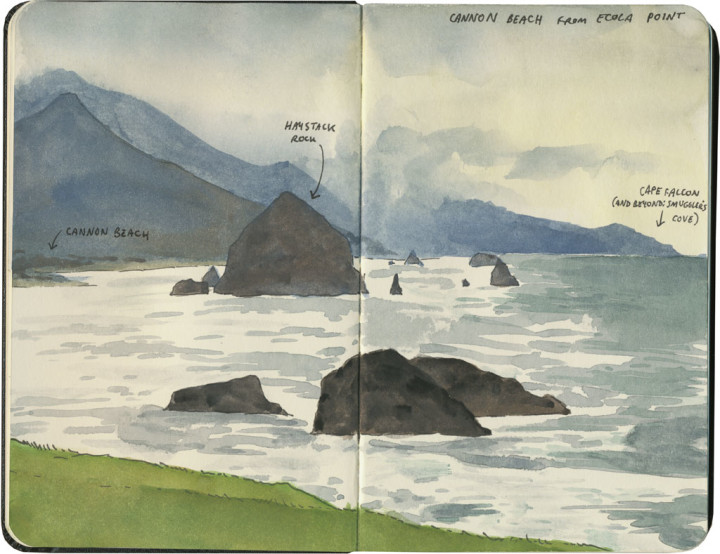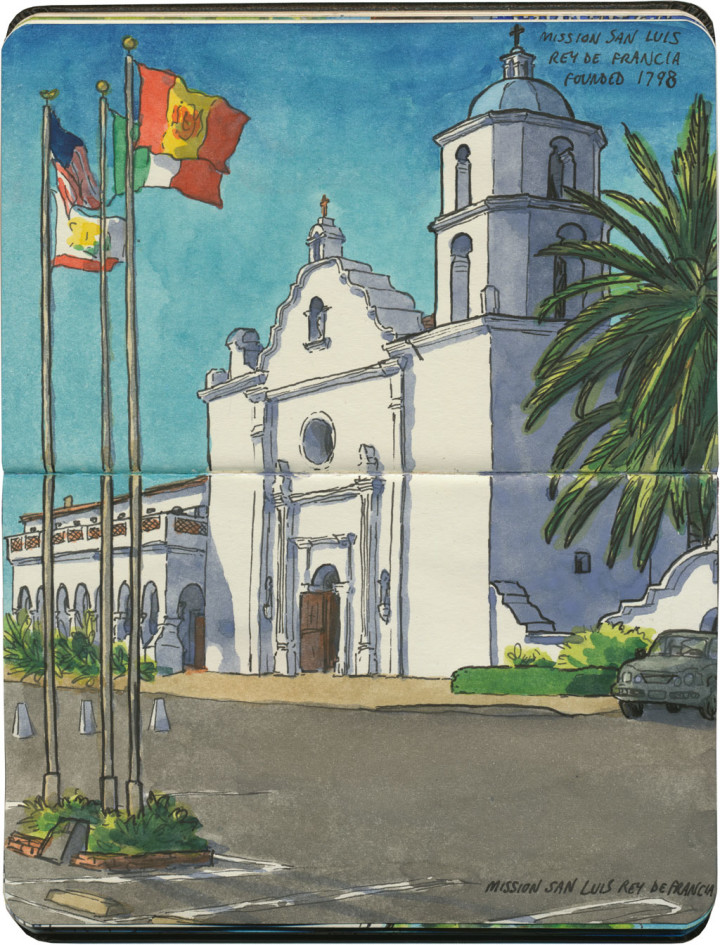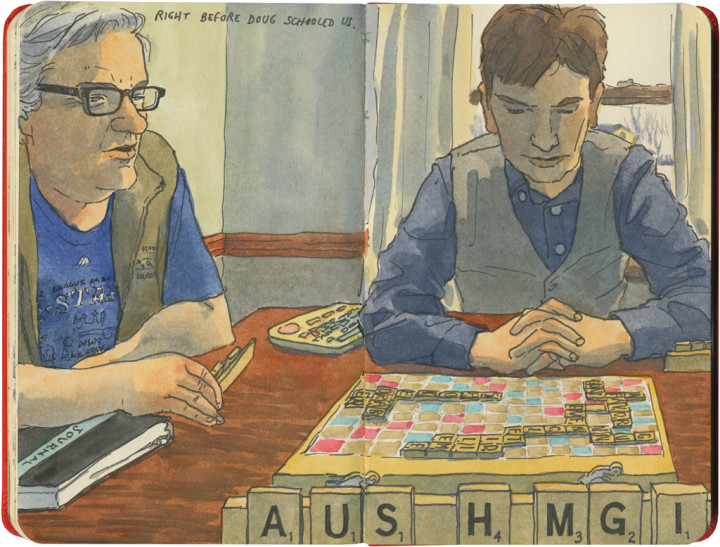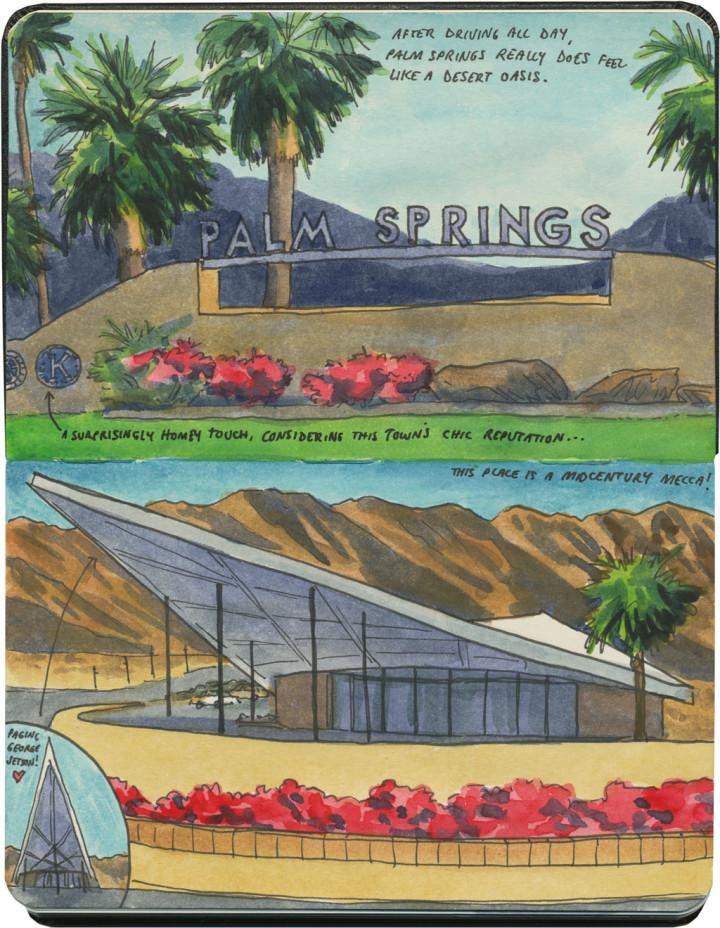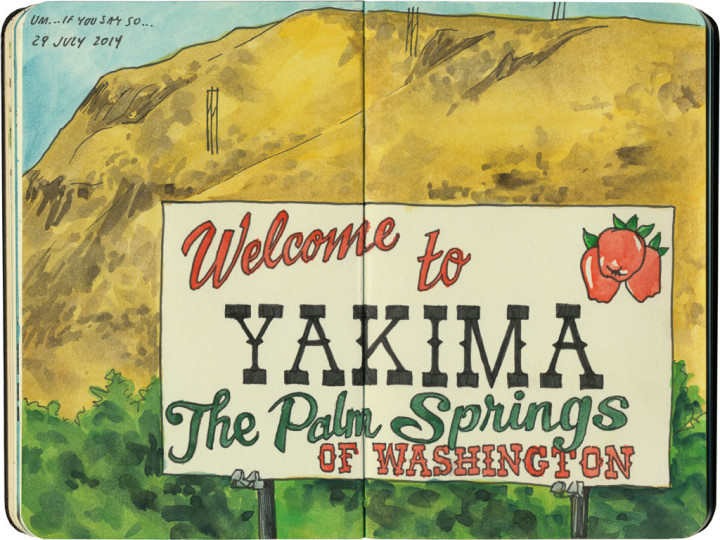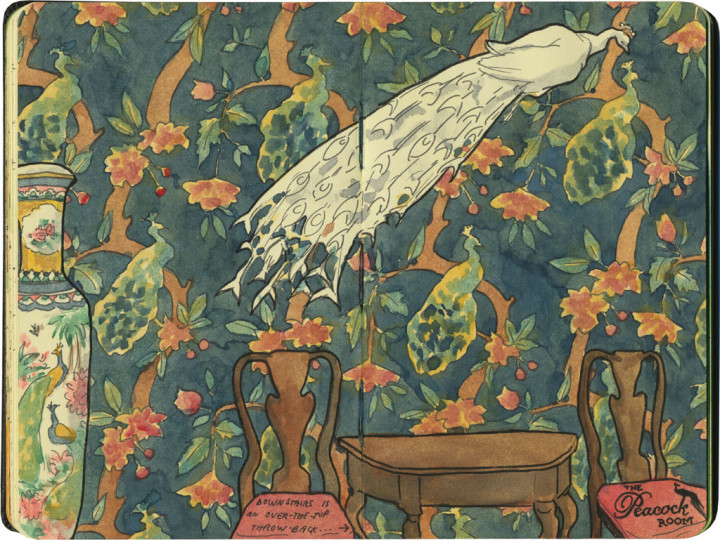
This is the first installment of my Mission Mondays series, exploring all 21 Spanish Missions along the California coast. You can read a recap of all 21 missions and find a list of all 21 posts in the series at this link.
Remember earlier this year when I took my big California trip? Well, a work event made it possible to get down there, but my real goal for the trip was to visit all 21 Spanish missions along historic El Camino Real. Ever since my first mission visit two years ago, I had been dying to see them all in one fell swoop. It took me a little over a week to get to them all (which was actually very difficult—especially when you’re trying to allow enough time for even unfinished sketching; I’d have loved to take two weeks instead), and it felt like a real accomplishment to travel every inch of the old King’s Highway. Each mission is so different—unlike the National Parks system, these properties are affiliated with each other only in the historical sense (more on that later). So rather than try to choose a representive few sketches to show you, I thought I’d recreate my journey here. Since Memorial Day typically marks the unofficial start of summer, today seemed like a good day to start a series of Mission Mondays for the season ahead.
Before I begin in earnest, though: a couple of disclaimers. I’m not Catholic, so on my mission trip I was merely a secular tourist, not a religious pilgrim. However, to this day almost every mission is still an active, functioning church; so I did my best to be respectful of the sacred spaces I was visiting. Sometimes that meant refraining from going inside while a mass or other event was taking place—so I didn’t end up seeing the interiors of every single mission. Still, you’ll get the idea.
Here’s the other thing: I am well aware that as an area of interest, the Spanish missions are problematic. After all, these are the places where an encroaching culture subjugated and indoctrinated the Indigenous peoples of California. Thankfully, most of the missions now have updated interpretive exhibits that address this part of their history; if you’re interested in learning more about these places, I highly recommend seeking out that information. But since that story exists elsewhere, and is only one narrative of many, it’s not the one I’ll be telling here. As an artist, I’m most interested in the architecture and setting of these places—so that’s the story I’ll be telling through my sketches.

Okay! Here we go. When visiting the 21 California missions, you’ll be tempted to go chronologically, in the order in which they were built. However, that’ll have you doubling back all over the state—most people just start at the bottom and work their way up. So let’s start in San Diego, at the southernmost mission in modern-day California. In fact, the adventure begins just a few miles from the Mexican border.

Mission San Diego de Alcalá also happens to be the oldest of the missions in “Alta California” (Upper California; the name dates back to when Spain controlled the southwest. Alta California was the northern half of the territory; Baja California is still intact as a state in Mexico, with 30 more missions of its own.). It’s also the one I was most looking forward to, since I’d never been that far south in California before.

It turns out I picked the right season to see it. It was mid-February, so it wasn’t hot yet (though still a pleasant 80 degrees), and the courtyard was ringed with blooming hot-pink bougainvillea.

The place had all the hallmarks I had come to recognize in most of the missions: high, white adobe walls, a pitched, wooden-and-tile roof, and at least one interior courtyard.

This one had a surprise extra, though: a modern chapel built with much older elements. This choir stall was originally built in Spain, seven hundred years ago—somehow it made the whole place feel like a slice of old Mexico City instead of San Diego.

I wandered through the complex as thoroughly as I could, but in the end I just kept coming back to the bells. Not every mission has a campanario (or campanile), but it’s the bells that I think of when I picture any mission. The bells are what inspired me to take this trip in the first place—and it felt good to have the image transformed from one in my head to one on paper.
Save
Save
